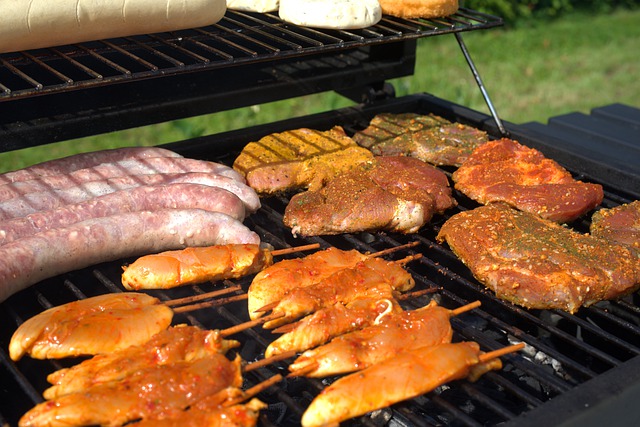How Green Is Your Grill?
go.ncsu.edu/readext?705506
en Español / em Português
El inglés es el idioma de control de esta página. En la medida en que haya algún conflicto entre la traducción al inglés y la traducción, el inglés prevalece.
Al hacer clic en el enlace de traducción se activa un servicio de traducción gratuito para convertir la página al español. Al igual que con cualquier traducción por Internet, la conversión no es sensible al contexto y puede que no traduzca el texto en su significado original. NC State Extension no garantiza la exactitud del texto traducido. Por favor, tenga en cuenta que algunas aplicaciones y/o servicios pueden no funcionar como se espera cuando se traducen.
Português
Inglês é o idioma de controle desta página. Na medida que haja algum conflito entre o texto original em Inglês e a tradução, o Inglês prevalece.
Ao clicar no link de tradução, um serviço gratuito de tradução será ativado para converter a página para o Português. Como em qualquer tradução pela internet, a conversão não é sensivel ao contexto e pode não ocorrer a tradução para o significado orginal. O serviço de Extensão da Carolina do Norte (NC State Extension) não garante a exatidão do texto traduzido. Por favor, observe que algumas funções ou serviços podem não funcionar como esperado após a tradução.
English
English is the controlling language of this page. To the extent there is any conflict between the English text and the translation, English controls.
Clicking on the translation link activates a free translation service to convert the page to Spanish. As with any Internet translation, the conversion is not context-sensitive and may not translate the text to its original meaning. NC State Extension does not guarantee the accuracy of the translated text. Please note that some applications and/or services may not function as expected when translated.
Collapse ▲With Independence Day just around the corner, many of us are planning the meal we will cook to share with family and friends. Grilling is a great way to cook fresh meats and vegetables quickly, make a meal more festive, and delegate some of the cooking.
You have several types of fuels to choose from when grilling ‐ gas, electricity, or charcoal. Each has its own environmental and monetary costs.
Gas and electricity are quick and don’t leave much of a carbon footprint. But both are lacking in that you don’t get that wood smoke flavor added to the food.
Charcoal, the third fuel option, is made two different ways; one method is much more organic than the other. The commercial method uses leftover sawdust, combined with binders, including coal dust, sodium nitrate, limestone, borax, and lighter fluids, and bakes them into briquettes. Regular and self‐lighting charcoal briquettes pollute the environment with volatile organic compounds (VOCs), a dangerous ozone‐causing pollutant. Every year Americans alone release over 14,000 tons of VOCs into the atmosphere from the 46,000 tons of lighter fluid burned through charcoal grills. The ash from charcoal briquettes contains chemical residues and must be disposed of in the garbage.
Natural lump hardwood charcoal, on the other hand, is carbon neutral or even slightly carbon negative if the ashes are used as a biochar soil amendment. Nothing compares to the flavor of natural lump hardwood charcoal ‐ it is the fuel of choice for barbeque masters. This type of charcoal is made from wood that is kiln-dried. This process releases the same amount of carbon dioxide as if the wood was allowed to decay on its own in the forest, and it imparts a smoky flavor to foods that complement meats, poultry, fish, and vegetables. Hardwood lump charcoal burns hotter and cleaner than briquettes and is much easier to light ‐ even without lighter fluid. The leftover ash is good for the environment, as it can be used as a soil amendment to neutralize acidic soils.
No matter which method you use to grill, be safe and enjoy the holiday.





